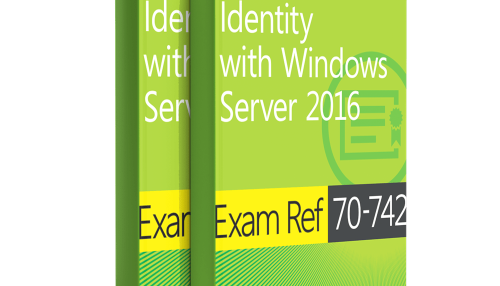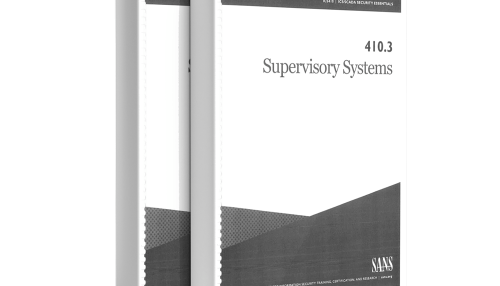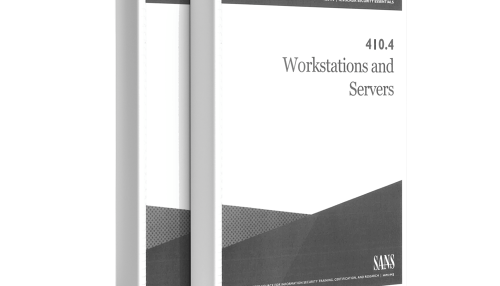Exam Ref 70-742 Identity with Windows Server 2016
فهرست مطالب کتاب Exam Ref 70-742 Identity with Windows Server 201:
Introduction
Preparing for the exam
CHAPTER 1 Install and configure Active Directory Domain Services
CHAPTER 2 Manage and maintain AD DS
CHAPTER 3 Create and manage Group Policy
CHAPTER 4 Implement Active Directory Certificate Services
CHAPTER 5 Implement identity federation and access solutions
Index
Exam Ref 70-744 Securing Windows Server 2016
فهرست مطالب کتاب Exam Ref 70-744 Securing Windows Server 2016:
Introduction
Preparing for the exam
CHAPTER 1 Implement server hardening solutions
CHAPTER 2 Secure a Virtualization Infrastructure
CHAPTER 3 Secure a network infrastructure
CHAPTER 4 Manage Privileged Identities
CHAPTER 5 Implement threat detection solutions
CHAPTER 6 Implement workload-specific security
Index
Exam Ref SC-900 Microsoft Security, Compliance, and Identity Fundamentals (Second Edition)
فهرست مطالب کتاب Exam Ref SC-900 Microsoft Security, Compliance, and Identity Fundamentals:
Acknowledgments
About the authors
Introduction
CHAPTER 1: Describe the concepts of security, compliance, and identity
CHAPTER 2: Microsoft identity and access management solutions
CHAPTER 3: Capabilities of Microsoft security solutions
CHAPTER 4: Describe the capabilities of Microsoft compliance solutions
CHAPTER 5: SC-900 Microsoft Security, Compliance, and Identity Fundamentals exam updates
Index
Hacking with Python The Ultimate Beginners Guide
فهرست مطالب Hacking with Python The Ultimate Beginners Guide:
Chapter 1: Preparation For Hacking
Chapter 2: Python Basics
Chapter 3: Writing Python Programs
Chapter 5: Operators and Expressions
Chapter 6: Functions and Modules
Chapter 7: Setting Up for Hacking
Chapter 8: Network Hacking
Chapter 9: Hacks for the Web
Chapter 10: Understanding Attacks Using Python
Chapter 11: Other Nifty Hacks to Try
Conclusion
Bonus: Preview Of ‘Introduction to Python 3
IAPP CIPM Certified Information Privacy Manager Study Guide
فهرست مطالب کتاب IAPP CIPM Certified Information Privacy Manager Study Guide:
Introduction
Chapter 1: Developing a Privacy Program
Chapter 2: Privacy Program Framework
Chapter 3: Privacy Operational Life Cycle: Assess
Chapter 4: Privacy Operational Life Cycle: Protect
Chapter 5: Privacy Operational Life Cycle: Sustain
Chapter 6: Privacy Operational Life Cycle: Respond
Index
ICS-410-1 ICS Ovenriew
فهرست مطالب:
GICSP Overview
ICS Concepts
EXERCISE l.l: Learningfrom Peers
Purdue Levels 0 and I
ExERcısE l.2: Programming a PLC
Purdue Levels 2 and 3
scADA
ExERcısE l.3: Programmingan HMl
lT and ICS Differences
Physical and Cybersecurity
Secure ICS Network Architectures
EXERCISE 1.4: Architecting a Secure DCS
ICS-410-2: Field Devices and Controllers
فهرست مطالب:
ICS Attack Surhce
Purdue Level 0 and I Attacks
Control Things Platform
ExERcısE 2. l: Finding Passwords in EEPRoM Dumps
Level 0 and I Technologies
ExERcısE 2.2: Exploring Fieldbus Protocols
Purdue Level 0 and I Defenses
Ethernet and TCP/lP
ExERcısE 2.3: Network Capture Analysis
ICS Protocols overTCP/IP
Attack on Networks
ExERcısE 2’4: Enumerating ModbusTCP
ICS-410-3: Supervisory Systems
فهرست مطالب:
Enforcement Zone Devices
Understanding Basic Cryptography
WirelessTechnologies
Wireless Attacks and Defenses
ExERcısE 3.I: Network Forensics of an Attack
Purdue Level 2 and 3 Attacks
Historians and Databases
ExERcIsE 3.2ı BypassingAuthentication with SQL lnjection
HMI and UlAtocks
Password Defenses
ExERcısE 3.3: Password Fuzzing
ICS-410-4: Workstations and Servers
فهرست مطالب:
Patching ICS Systems
Defending Microsoft Windows
EXERCISE 4.1 : Baselining with PowerShell
Defending Unix and Linux
Endpoint Security Software
EXERC I SE 4.2: Configuring Host-Based Firewalls
Event Logging and Analysis
ExERcısE 4.3: Windows Event Logs
Honeypots
Attacks on the Perimeter
ExERcısE 4.4: Finding Remote Access
ICS-410-5 ICS Secutiy Governance
فهرست مطالب:
Building an ICS Cybersecurity Program
Creating ICS Cybersecurit Polic
Disaster Recovery
Measuring Cybersecurity Risk
lncident Response
EXERCISE 5. I : lncident ResponseTabletop Exercise
Final Thoughts and Next Steps
ICS515.1 Threat Intelligence
فهرست مطالب:
Day 1: Threat Intelligence
Day 2: Asset ID’ing and NSM
Day 3: Incident Response
Day 4: Threat and Environment Manipulation
Day 5: Under Attack!












